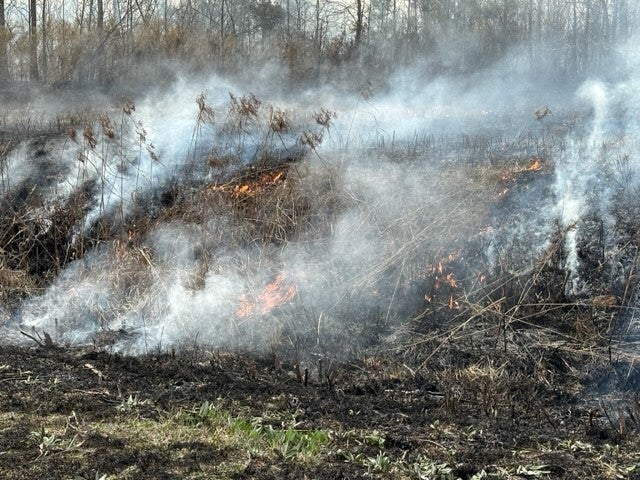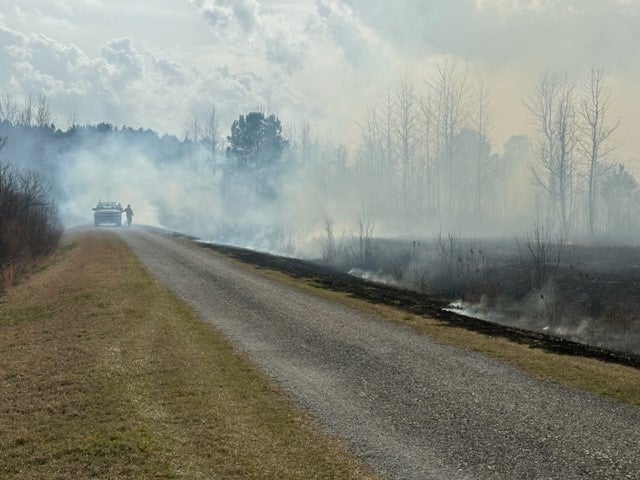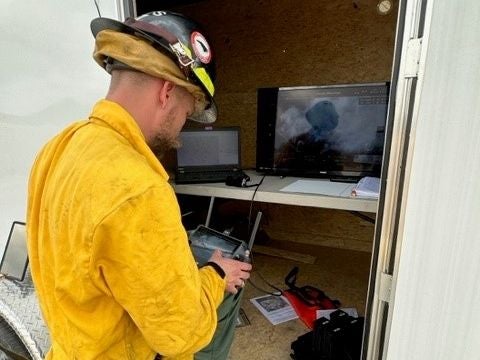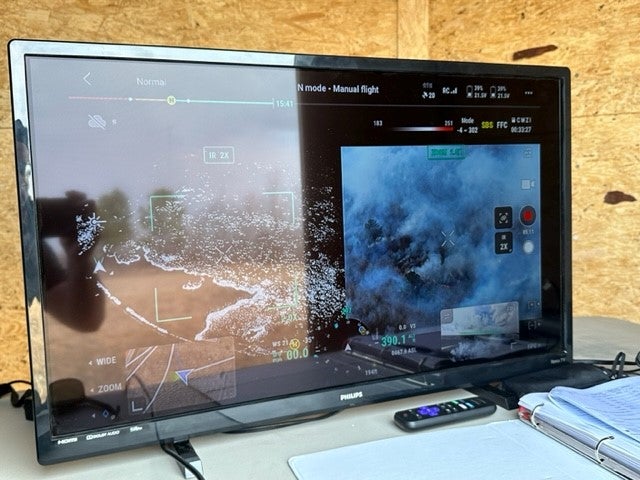West Research Campus Restoration Projects
Wildflower Meadow Restoration Project
In February, a member of the HSC Grounds Services team reached out to the ECU Sustainability Manager about restoring a wildflower meadow at West Research Campus (WRC). We met at the site near the entrance to the WRC property and discussed this plan with the Campus Landscape Architect and ECU Biology Professor, Dr. Carol Goodwillie. Typically, this area near the main building gated entry is mowed on a monthly basis; however, by only mowing once per year instead we will allow native plants to return, but not keep trees from growing. This will bring back native wildflowers and establish a pollinator habitat at West Research Campus. If needed, we also discussed the possibility of seeding the area with a native, pollinator-friendly seed mix in the fall to speed up the wildflower meadow restoration efforts. While we were at WRC, Dr. Goodwillie asked if we could put a team together for a “Pitcher Plant Rescue Mission” as well.
Pitcher Plant Rescue Mission
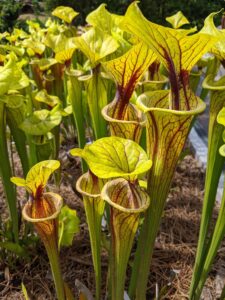
Yellow pitcher plant, or Sarracenia flava, is a carnivorous plant that is found only in the Southeastern region of the United States. Its trumpet-shaped modified leaves, or “pitchers”, lure insects in with nectar and then trap them in liquid with digestive enzymes. Slippery downward pointing hairs encourage the insects to fall in and make it difficult for them to crawl out. From their insect prey, the plants get the nitrogen they need to grow in nutrient-poor wetlands. But like most plants, pitcher plants make their own sugar, using the energy of sunlight to fuel photosynthesis. Because the pitchers are designed to trap insects, they are not as good as the leaves of other plants at catching sunlight. As a result, they need a full sun environment to thrive.
Pitcher plants at the West Research Campus have been declining as shrubs and trees have grown around them, shading them and competing for light. Historically, the land at the West Research Campus was maintained as an open sunny landscape by the frequent occurrence of wildfires. Now that wildfires are suppressed, woody plants have begun to encroach. Removal of trees and shrubs from pitcher plant habitat is essential for their survival.
ECU Sustainability Manager, Chad Carwein, coordinated a trip to West Research Campus back in February for student volunteers to help clear a ditch where there are about two dozen Pitcher Plants growing. The student volunteers came from Biomedicine, Biology, Geography, and other degree programs. The students used loppers, saws, and other tools to clear the thick brush that was choking out the Pitcher Plants. Students learned about features of the Pitcher Plant from Dr. Carol Goodwillie, ECU Biology Professor, who has maintained longtime research plots at West Research Campus for about 20 years now. This volunteer effort was made possible by the ECU Health Sciences Campus Grounds Services team who met the volunteers at the site with hand tools and gloves as well some larger power tools to help remove small trees growing and shading the pitcher plants in the ditch.
NC Forest Service Prescribed Burn
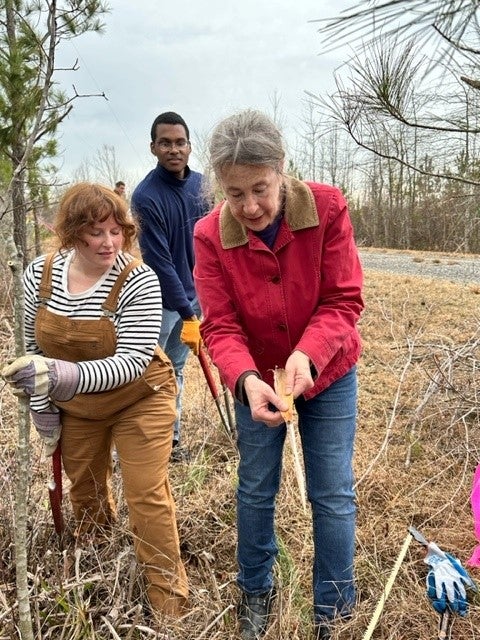
On the first day of March, the North Carolina Forest Service conducted a prescribed burn at West Research Campus (WRC). Simply put, a prescribed or controlled burn is a planned low-intensity fire that is often used to prevent uncontrolled wildfires from overwhelming a forest landscape by removing hazardous fuels such as low growing vegetation. This allows experts on the ground to manage fires on a given landscape based on smoke, vegetation, species habitat, location and intensity needed, and is used as a management tool to stimulate the natural regeneration of a forest and prevent high-intensity, high-heat fires that can devastate landscapes and damage seed beds. ECU has been performing controlled burns for many years out at WRC, but due to the COVID-19 pandemic and poor conditions to conduct a controlled burn have prevented us from having one in about 5 years. However, controlled burns have been utilized on North American forests for millennia and are essential tools for forest health, especially in western forests. The right fire at the right place at the right time:
- Reduces hazardous fuels, protecting human communities from extreme fires
- Minimizes the spread of pest insects and disease
- Removes unwanted species that threaten species native to an ecosystem
- Provides forage for game
- Improves habitat for threatened and endangered species
- Recycles nutrients back to the soil
- Promotes the growth of trees, wildflowers, and other plants
